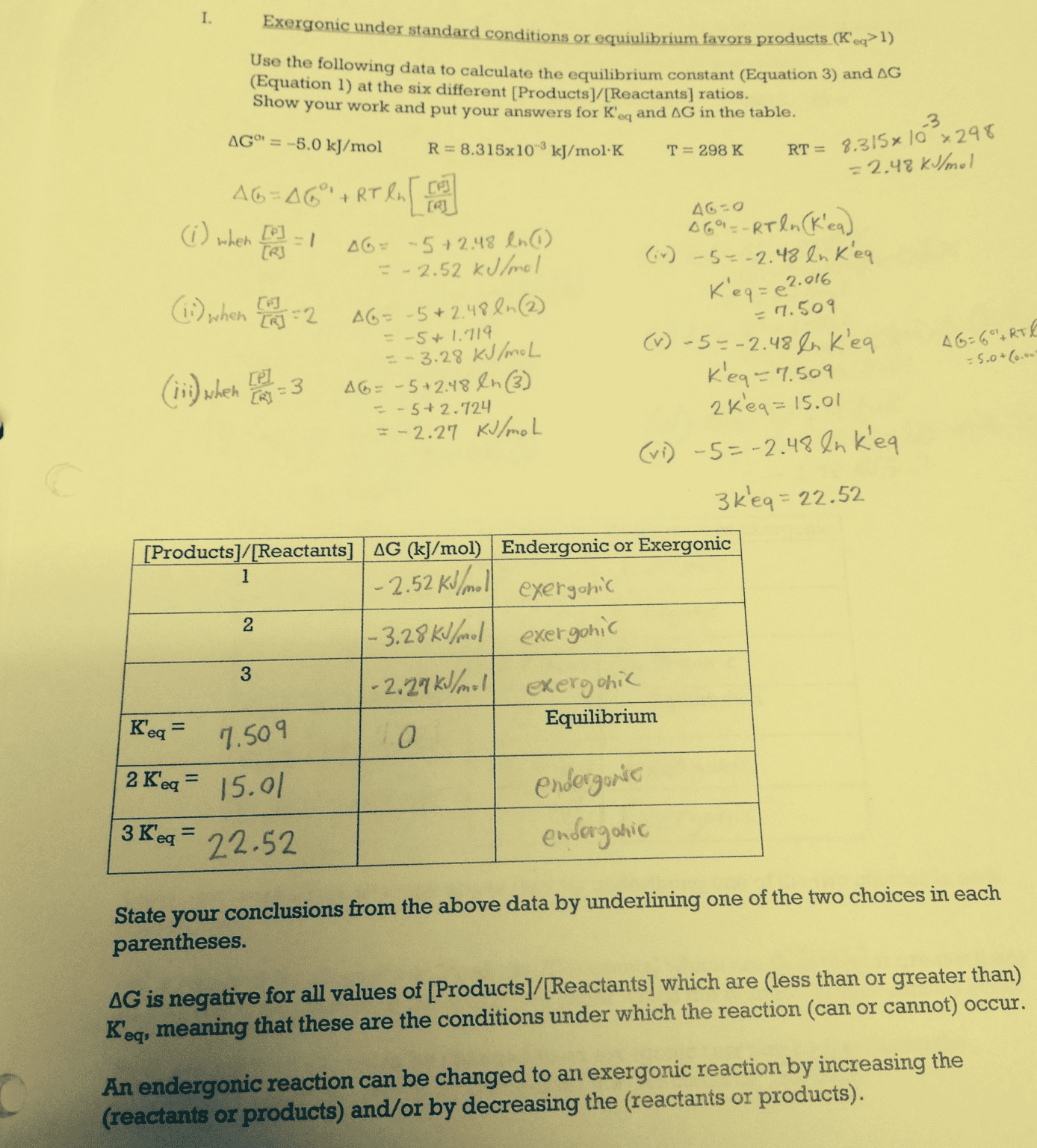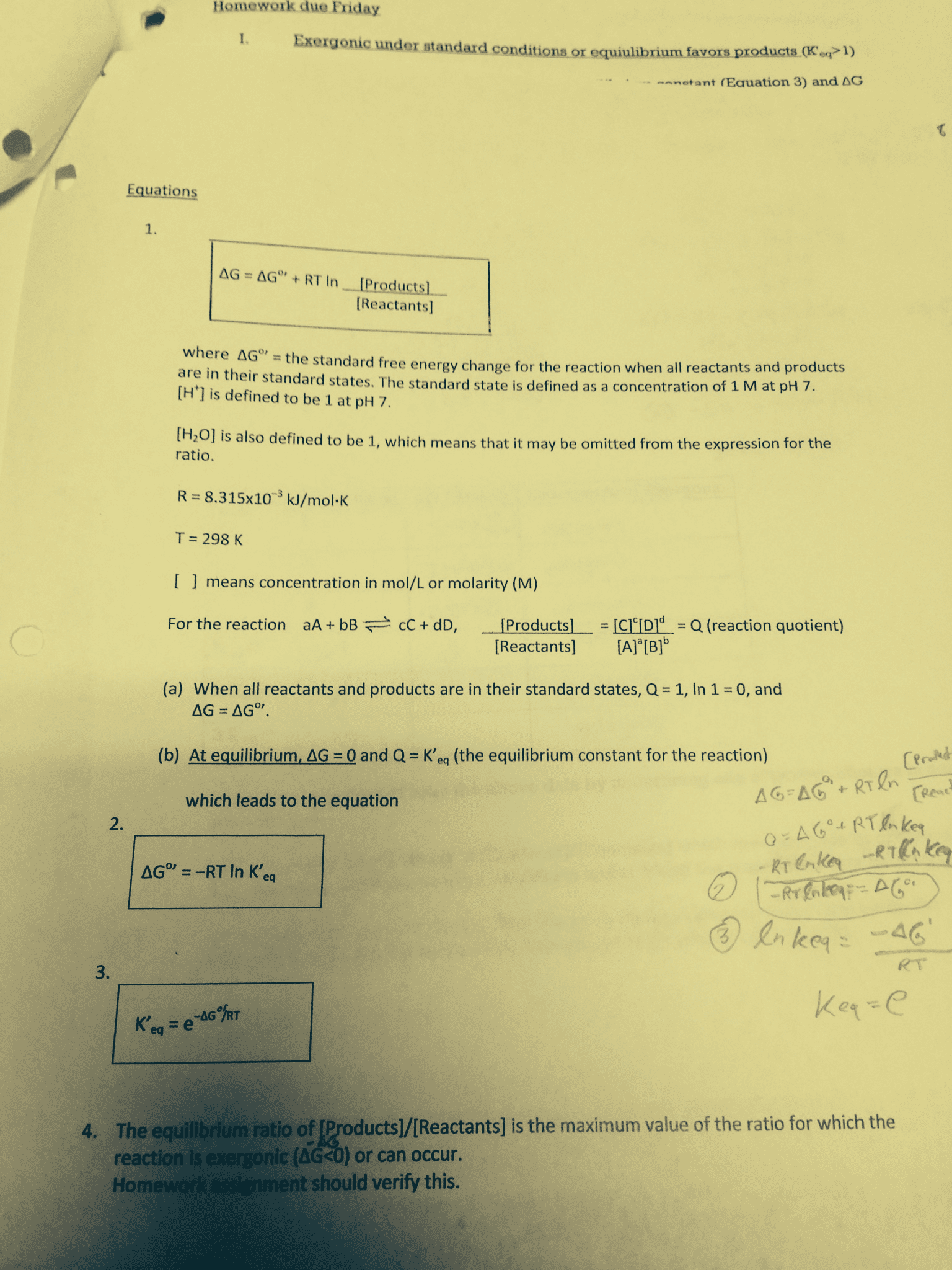CHEM 201 Study Guide - Midterm Guide: Acetic Acid, Joule, Gas Constant

March 21, 2016
●Thermodynamic force
- 0 is greater than delta G
- Larger magnitude - the bigger the pugh
●Free energy curve
- Slope of tangent line at a particular point = Delta G
- Pure A : A -> B spontaneous = downhill in G
- Mix A and B: A->B - magnitude of Delta G is small than
1. Top of slope
- Delta G is large and negative
2. Middle of downward slope
- Delta G is smaller and negative
3. Bottom of downward slope
- Delta G is 0
- Going up from 3 is nonspontaneous
●Minimum in free energy: A->B and B->A uphill in G, so non-spontaneous
●Delta G 0 is looking at change of entire reaction, not just one point
●Delta G = delta G zero + RTlnQ
●A(<-/->)B ; Q = [B]/[A] @ a particular point in rxn
- R = gas constant = 8.314 x 10^-3 kJ/mol x K
- ln = natural log
- Base “e” - 2.718…..
- Y=e^x
- ln(y)=x
- @ equilibrium ; delta G = zero, Q=K
-0 = Delta G zero + RTlnK → Delta 0 = -RTlnK
●K → Delta G zero
- What is Delta G zero of the following rxn?
- picture
- Know acid dissociation rxn of CH3CO2H to K = Ka pf CH3CO1H = 1.8 x 10^-5
- Delta G = -RTlnK = -(8.314 x 10^-4 kJ/mol*K)(298 K)ln(1.8*10^-5) = +27.1 kJ/mol
- So, unfavorable! Want negative. But K << 1
- K < 1 ; Delta G zero > 0
- K > 1 ; Delta G zero < 0
- K = 1 ; Delta G Zero = 0
●Delta G Zero → K
- What is the K for the following rxn?
-N2(g) + 3H2(g) → 2NH3(g)
- Previously calculated delta G rxn = -32.6 kJ @ 298 K
-Delta G0 rxn = -RTlnK → delta G/ RT = lnK
- Sooooo = 5.2 x 10^-5
March 25, 2016
●Consider the following rxn:
-Zn (s) + Cu^2+ (aq) → Zn^2+(aq) + Cu (s)
find more resources at oneclass.com
find more resources at oneclass.com
Document Summary
Slope of tangent line at a particular point = delta g. Pure a : a -> b spontaneous = downhill in g. Mix a and b: a->b - magnitude of delta g is small than: top of slope. Delta g is large and negative: middle of downward slope. Delta g is smaller and negative: bottom of downward slope. Minimum in free energy: a->b and b->a uphill in g, so non-spontaneous. Delta g 0 is looking at change of entire reaction, not just one point. Delta g = delta g zero + rtlnq. A()b ; q = [b]/[a] @ a particular point in rxn. R = gas constant = 8. 314 x 10^-3 kj/mol x k ln = natural log. @ equilibrium ; delta g = zero, q=k. 0 = delta g zero + rtlnk delta 0 = -rtlnk picture. Know acid dissociation rxn of ch3co2h to k = ka pf ch3co1h = 1. 8 x 10^-5.


